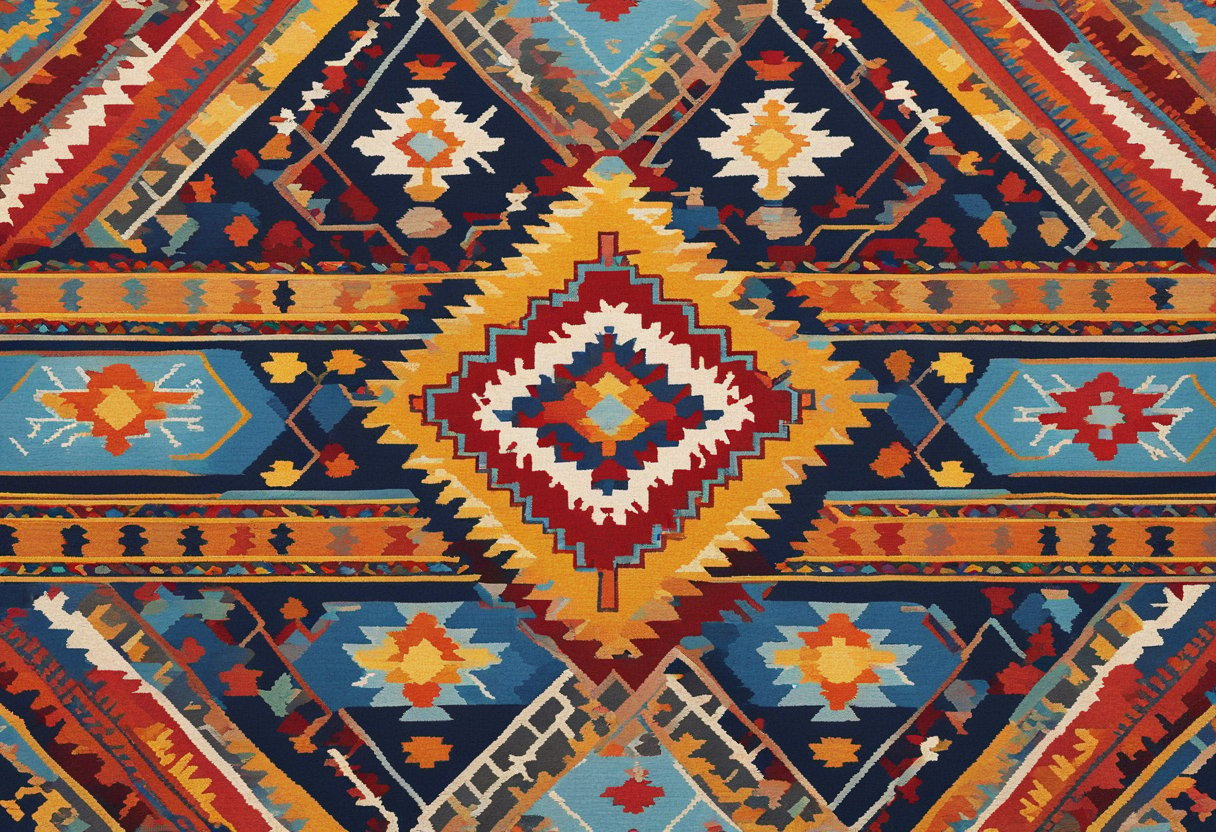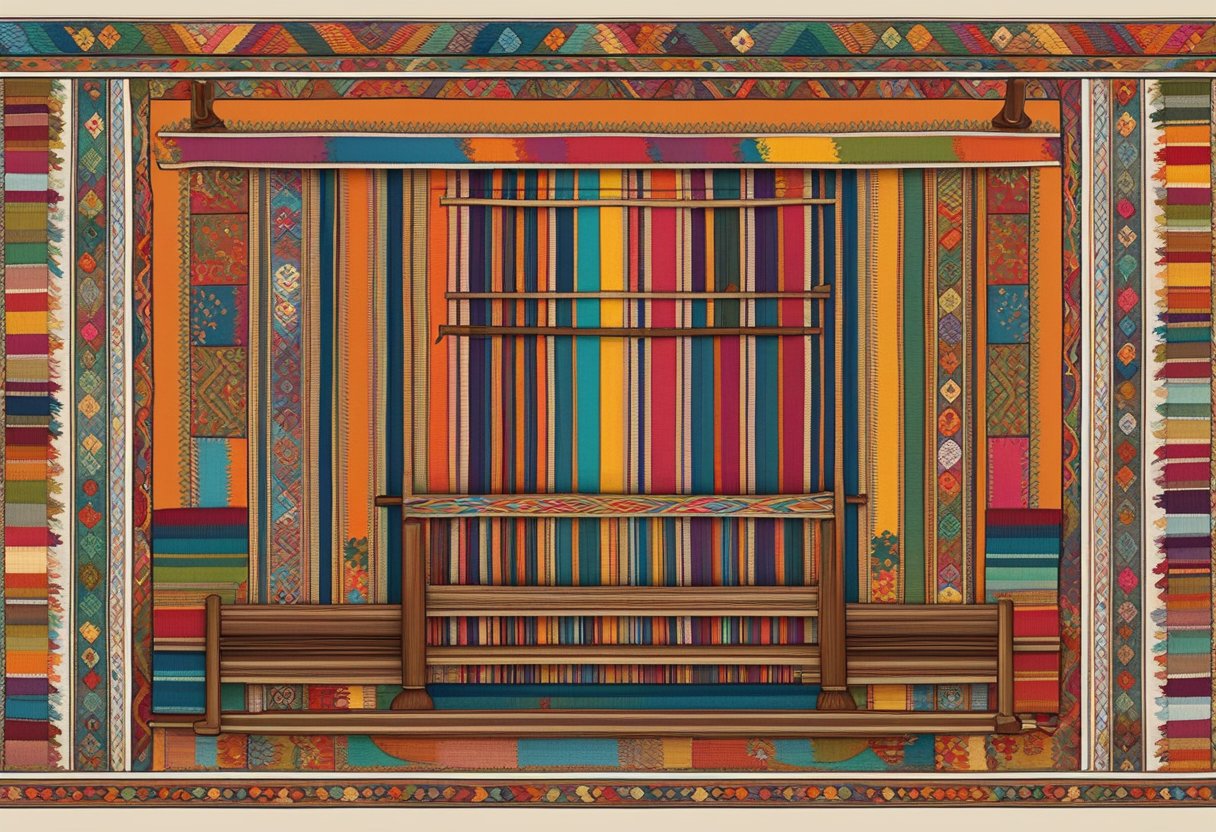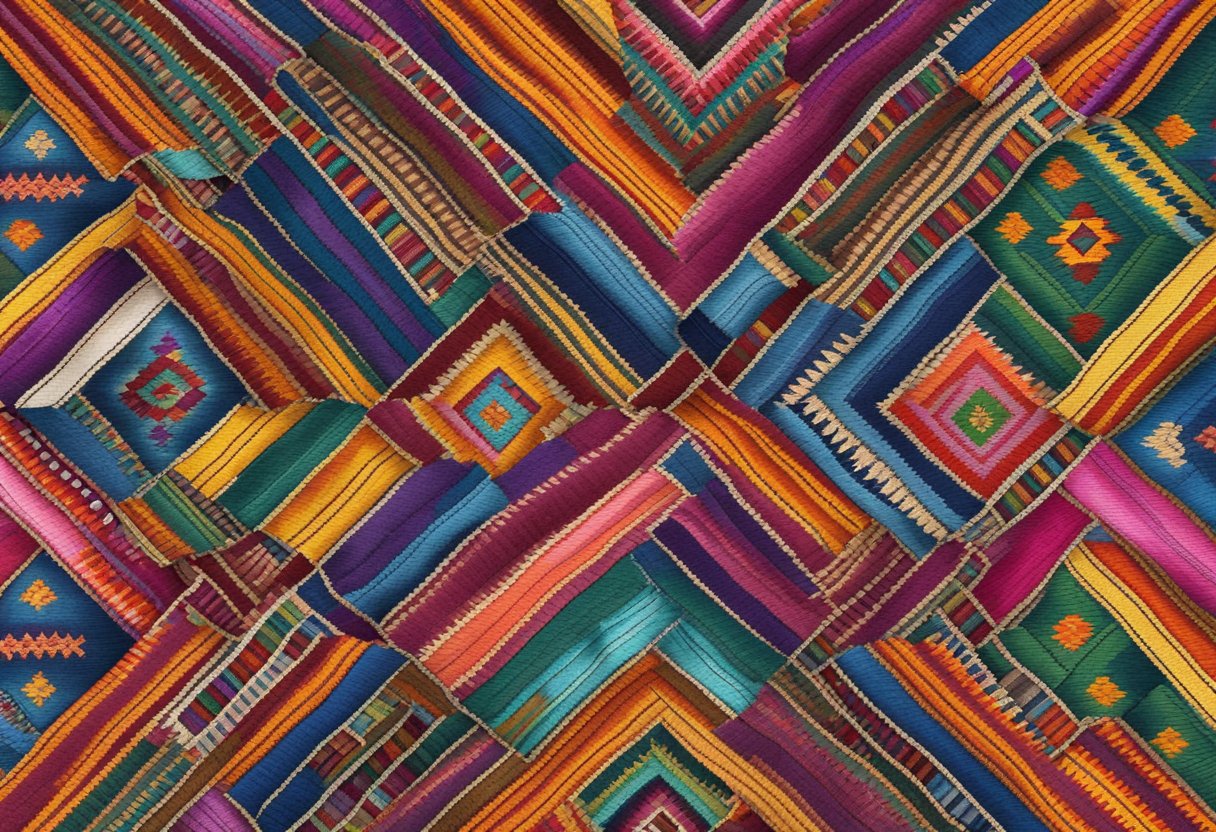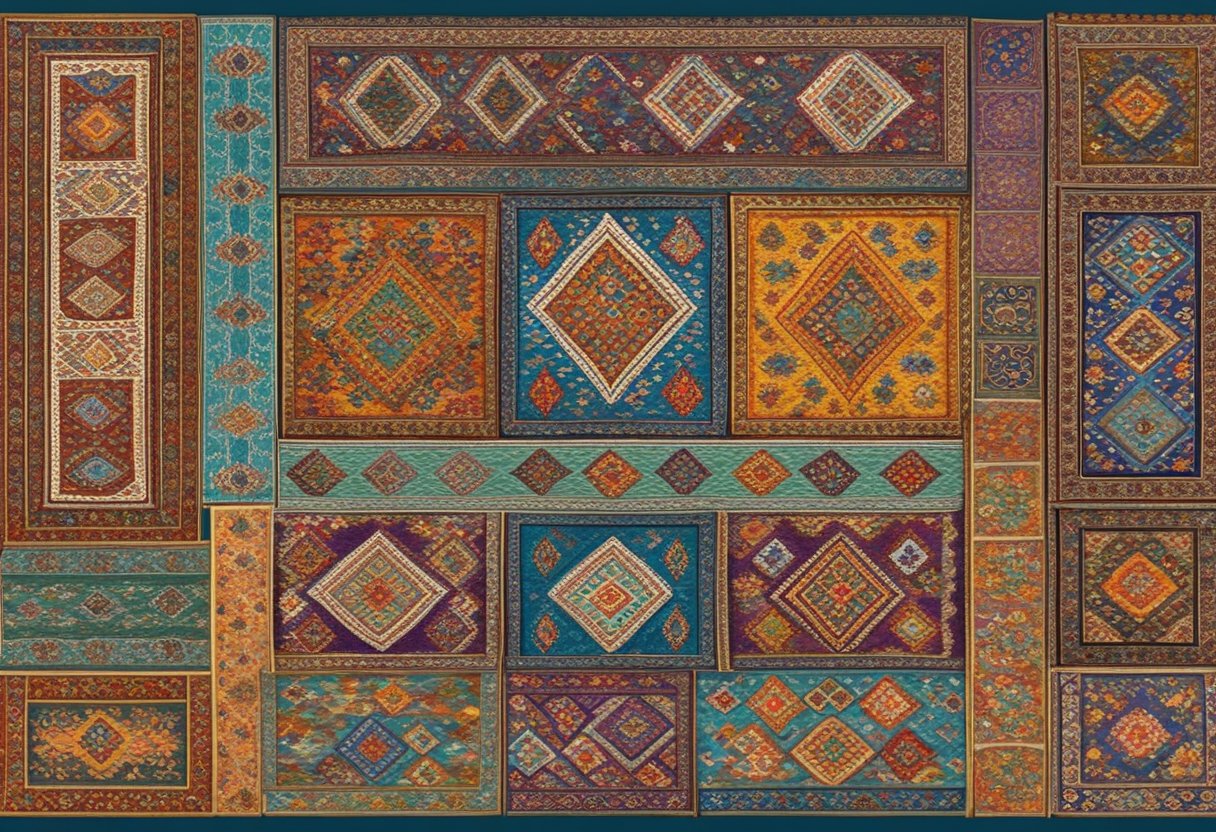What is Turkish Jajim? A Guide to Traditional Weaving Techniques

Turkish Jajim is a traditional flat-woven textile that showcases the intricate craftsmanship and cultural heritage of Turkey. Made from colored natural fibers, Jajim is characterized by its unique weaving technique that involves interlacing warp and weft threads to create eye-catching patterns and designs. These textiles are often woven in narrow strips which are then sewn together, resulting in a durable and versatile fabric.
Jajim has its roots in the rural areas of Turkey, where it has been used for various purposes including rugs, mats, sacks, and tent decorations. Unlike Kilim, another well-known type of flat-woven textile, Jajim features additional warp threads that add to its structural integrity and decorative appeal. This weaving method ensures that Jajim textiles are not only visually striking but also practical for everyday use. The appeal of Turkish Jajim lies in its vibrant colors and intricate patterns, making it a popular choice for modern home decor. Whether used as a statement rug, a cozy throw, or a decorative wall hanging, Jajim brings a touch of traditional Turkish craftsmanship into contemporary spaces.
Historical Context of Jajims

The history of Jajims spans several regions and centuries. They have cultural significance and distinct differences from similar textiles like Kilims.
Origins and Cultural Significance
Jajims are believed to have originated in Persia and Azerbaijan. They were woven in many villages across Iran and the broader Caucasus region. Historically, nomadic tribes created Jajims. The technique and patterns were passed down through generations. Each design often holds cultural symbols or tells a story. Jajims served practical purposes. They were used as blankets, bedding, and wraps. Their versatility made them essential household items in rural areas.
Jajim and Kilim: Understanding the Differences
Jajims usually incorporate extra warp threads, creating unique patterns. Kilims, on the other hand, are known for their geometric motifs and stripe variations. Jajims are constructed in narrow strips that are later sewn together. This differs from Kilims, which are typically woven in one piece. The materials used can also vary, with Jajims often comprising natural fibers available locally. Their aesthetics made them popular for decorative and practical uses.
Materials and Techniques

Turkish Jajims use natural fibers and showcase intricate weaving techniques. The materials and colors employed significantly influence the design and patterns of these traditional textiles.
Natural Fibers: Wool and Cotton
Turkish Jajims are primarily made from wool and cotton. Wool, sourced from local sheep, is favored for its durability and warmth. It's typically used in the creation of warp threads. Cotton, on the other hand, is used for its softer texture, often comprising the weft threads. These natural fibers ensure that Jajims are both long-lasting and comfortable.
- Wool: Durable, warm, and resilient.
- Cotton: Soft, comfortable, and complements wool.
- Handmade Jajims, woven with these fibers, reflect the skill and tradition of rural artisans.
Weaving Process: Warp and Weft
The weaving technique of Turkish Jajims involves crafting the fabric using warp and weft threads. The warp threads run longitudinally while the weft threads are interlaced horizontally. The interlacing of these threads forms the intricate patterns Jajims are known for. The handmade nature of the process allows for unique designs and ensures the durability of the woven fabric.
- Warp: Longitudinal threads providing structure.
- Weft: Horizontal threads interlaced with the warp.
- Weaving Technique: Traditional and meticulous, creating flat-woven textiles.
Color Application and Patterns
Colors and patterns are key elements of Turkish Jajims. Natural dyes, often derived from plants and minerals, are used to create vibrant colored threads. These threads are woven into geometric motifs, each carrying cultural significance. The colors can vary widely, but popular hues include reds, blues, and greens. Patterns often include stripes, diamonds, and other geometric shapes, woven with attention to detail.
- Colors: Natural dyes from plants and minerals.
- Motifs: Geometric shapes signifying cultural meanings.
Turkish Jajims uniquely blend traditional weaving techniques with natural materials, resulting in visually striking and culturally rich textiles.
Designs and Patterns
Turkish Jajims are known for their intricate designs and symbolic patterns. These elements combine to reflect the cultural heritage and rich artistry of the region. Each Jajim tells a unique story through its motifs, colors, and geometric arrangements.
Geometric and Abstract Motifs
Jajims often feature geometric patterns like squares, diamonds, and lozenges. These shapes create a structured and balanced design, appealing to aesthetic sensibilities. Stepped diagonal lines are also common, adding dynamic movement to the fabric. Abstract motifs may be included, breaking the rigidity of geometric shapes. Stripes and plain color sections might be used as well, adding variety without overwhelming the main design. The combination of geometric and abstract motifs provides a complex yet harmonious visual experience.
Symbolism Behind Patterns
Many patterns in Jajims hold symbolic meanings. Diamonds and lozenges often represent protection and the concept of the "evil eye." These shapes are believed to ward off negative energy. Other symbols might include animal figures or floral designs, each with its own cultural significance. For instance, certain flowers might symbolize purity or love. Stepped diagonal lines may suggest water or movement, adding layers of meaning to the textile. Understanding these symbols provides insight into the beliefs and traditions of the weavers. The motifs are not just decorative but are deeply intertwined with the cultural identity of the people who create them.
Color Usage in Jajims
Color plays an essential role in Jajims. Blues, reds, and yellows are commonly used, each carrying its own significance. Red, for example, often symbolizes passion and vitality, while blue can represent protection or tranquility. The use of plain color sections or stripes helps balance the intricate motifs, creating a visually appealing and manageable design. Colors are chosen not only for their aesthetic appeal but also for their symbolic meanings. Each color combination is thoughtfully selected to enhance the design while conveying specific cultural messages. The interplay between colors and patterns creates a rich tapestry that is both beautiful and meaningful.
Types of Jajims

Turkish Jajims are versatile textiles that serve different purposes across households and decorative settings. These flat-woven textiles can be utilized both practically and ornamentally.
Functional Uses: Mats and Cushions
Jajims are commonly used as mats and cushions in various settings. Their flat-weave structure makes them ideal for floor coverings. In central Asia, they often double as seating mats, offering both comfort and durability. Jajims used as cushions add a layer of traditional flair to living spaces, combining functionality with cultural significance.
Heavy-duty jajims can be found in heavier fabrics suited for rural or tribal environments, where they are integral to household use. Their multi-purpose nature makes them suitable for outdoor settings as well, especially in regions like Turkey and Azerbaijan.
Decorative Uses: Wall Hangings and Furniture Covers
Jajims are also popular for decorative uses. They often grace walls as tapestries, adding a touch of traditional design to modern interiors. The intricate patterns and vibrant colors of these textiles make them perfect for artistic displays. In addition to wall hangings, jajims are used as furniture covers. Covering sofas or chairs, they introduce elements of ethnic design into home decor. Their flat-woven nature makes them easy to drape over different types of furniture, seamlessly blending aesthetics with functionality.
Contemporary Relevance

Turkish Jajims are popular today both as modern decor elements and antique collectibles. Their unique designs and weaving techniques continue to captivate people around the world.
Turkish Jajims in Modern Decor
Turkish Jajims are now featured in a wide range of contemporary settings. Their flat-woven texture and vibrant patterns make them suitable for various household uses, from rugs to wall coverings. These textiles add a touch of tradition and color to living rooms, bedrooms, and even outdoor spaces. Decorators appreciate their versatility. Turkish Jajims can be integrated into both minimalist and eclectic design themes. They are often paired with modern furniture to create a balanced look that blends the old and the new seamlessly.
The Market for Antique Jajims
Antique Jajims are highly prized by collectors and interior designers. These older pieces often showcase intricate patterns and craftsmanship that are hard to find in contemporary versions. They are considered valuable not just for their aesthetics but also for their history and cultural significance. Antique examples can fetch high prices at auctions and specialty stores. They are often displayed as decorative pieces or used sparingly to preserve their condition. Collectors seek them out for their uniqueness and the stories they carry from the villages and regions where they were originally woven.
Preservation and Care
Proper care is essential for the longevity and appearance of Turkish Jajim textiles. Maintenance and restoration techniques help maintain their intricate designs and durability.
Maintenance of Jajim Textiles
Regular cleaning is important to preserve the vibrant colors and patterns of Jajims. Dust the textile frequently using a soft brush or vacuum with a low suction setting to remove debris. Avoid direct sunlight, which can fade colors over time, and keep them in a dry environment to prevent mold growth. Spills should be blotted immediately with a clean, dry cloth. For deeper cleaning, a professional specializing in flat-woven textiles should be consulted to avoid damage. Rotate your Jajim periodically to ensure even wear and tear, especially if it is placed in a high-traffic area. Storage should be done in a cool, dry place, rolled or folded loosely with acid-free tissue paper to maintain its shape and design.
Repair and Restoration Techniques
Restoration of Jajim textiles requires specialized skills. Minor repairs, like small tears or loose threads, can be fixed with a needle and thread that matches the original color. Always use gentle hand-stitching techniques to avoid further damage. For more significant damage, consider professional restoration services. Experts can repair large rips or extensive wear by reconstructing sections using traditional methods and materials.
Color restoration may include dyeing with natural dyes to match the original hues. It is crucial to choose experienced professionals for such tasks to retain the textile's authentic appearance and durability. Periodic assessment by a textile conservator can help identify potential issues early, ensuring timely repairs and extended preservation.
Ethical Considerations and Trading
Ethical trade practices and global impacts on Turkey's traditional Jajim production are important areas of concern. It ensures that production respects workers and the environment.
Ethical Sourcing of Turkish Jajims
Ethical sourcing involves using fair labor practices and environmentally responsible methods. In Turkey, makers of Jajims usually work in rural areas. Fair labor practices mean that workers get fair wages and work in safe conditions. Protecting natural fibers and reducing pollution are ways to maintain sustainability. This respects both the environment and local communities. Producers must avoid harmful chemicals and use eco-friendly dyes. Buying Jajims through fair trade channels supports ethical standards. This improves the lives of local artisans and protects traditional craftsmanship.
Global Trade and Its Impacts
Trading Jajims on a global scale introduces challenges and opportunities. It's crucial to maintain ethical standards across borders. Exporters face issues like legal complexities, bureaucratic hurdles, and inconsistent policies. Such challenges can affect the fair treatment of workers and the sustainability of production. On the upside, a fair trade system can enhance economic growth and provide better incomes for artisans. Transparent supply chains ensure that products meet ethical criteria. Consumers can support these efforts by choosing ethically sourced Jajims. This helps create a market where traditions are respected and ethical standards are upheld.




